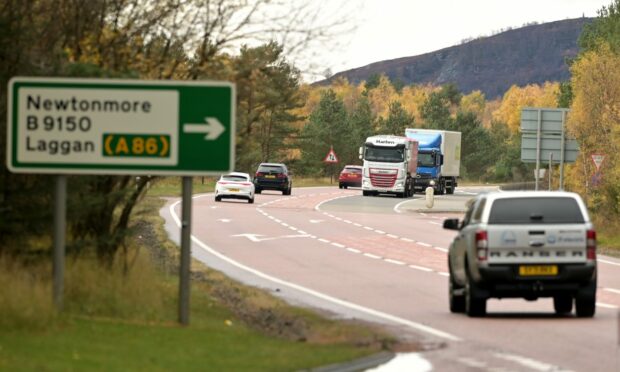Motorists are being warned of the dangers of driving tired following an alarming number of fatalities on the A9 Inverness to Perth trunk road.
Road Safety Scotland and the Scottish Government have launched a new campaign to highlight the risks of driver fatigue.
The campaign has been prompted by an increase in fatal accidents on the A9 trunk road.
Officials say fatigue contributed to as many as 25% of all fatal and serious collisions on the route between 2017 and 2022.
In 2022, a total of 12 fatal collisions and 18 deaths were reported on the A9, with 13 people killed between the months of July and November alone.
Michael McDonnell, director of Road Safety Scotland and a member of the A9 Safety Group, hopes this campaign will not only be a warning to motorists but help prevent further fatalities on one of Scotland’s busiest routes.
He said: “Sadly we have seen a rise in serious and fatal collisions on the A9 trunk road in the last year and many of them involve an element of driver fatigue – something that can be prevented.
“A tired driver is a danger not only to themselves but to everyone on the road.
“If you feel tired while behind the wheel, opening your window or turning up the music isn’t enough. Stop for a rest and a coffee before you get back on the road to help keep you and others safe.”
What does the new campaign highlight?
Fatigue is a contributory factor in collisions which kill or seriously injure around 50 people every year in Scotland.
Many of the counter measures used by drivers to combat tiredness, including opening a window, turning up the radio or pinching themselves, have been shown to be ineffective.
The multi-media campaign is urging drivers to take regular breaks, stop to rest and have a coffee, and plan ahead to avoid driving tired.
The advertisement, which will be broadcast across a range of platforms, features a striking close-up of a tired driver’s eye, with the road ahead reflected in it.
After a long blink, the road reappears in the eye, however, the car drifts towards the centre of the road as the eye droops further and finally remains closed, resulting in a head-on collision with another car and devastating consequences.
The initiative comes as SNP transport chief Jenny Gilruth confirmed the government’s promises to dual the A9 between Perth and Inverness was “simply no longer achievable.”
She blamed economic pressures as the reason behind their failure to meet the deadline.
In the meantime, she is urging motorists to plan ahead and avoid driving tired.
She said: “Driver fatigue is a serious issue that causes too many serious and fatal road collisions each year.
“Drivers often experience early signs of feeling tired such as yawning, eyes drooping and head-nodding, and should stop for a rest as soon as it’s safe to do so.
“We’re reminding people to plan their journeys well in advance, ensure they are well-rested before setting out and take regular breaks. It’s simple yet powerful advice which can help save lives on Scotland’s roads.”


Conversation